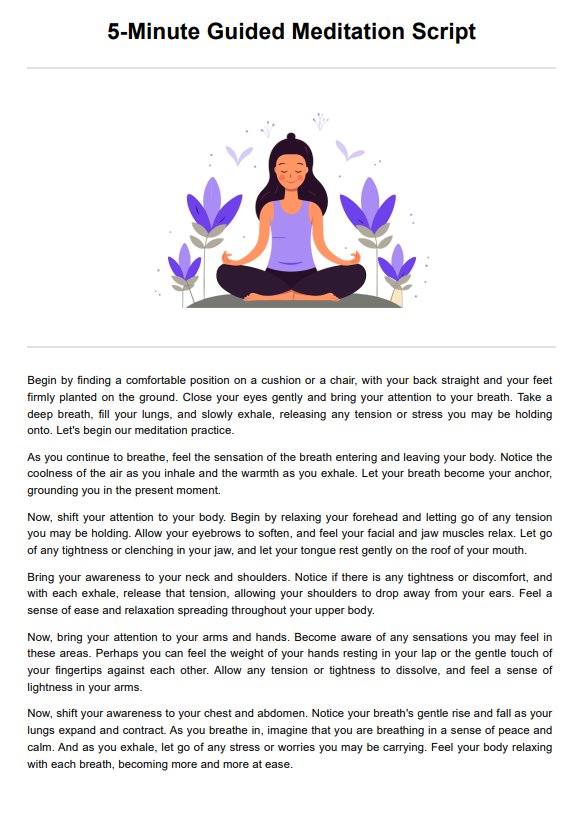Guided meditations are audio recordings or live instructions that lead the listener through a meditation session. In these, a narrator or guide verbally walks the listener through relaxation techniques, visualizations, and mindfulness practices to help the listener meditate. This can incorporate the use of scripts in numerous ways.

5-Minute Guided Meditation Script
Learn how to guide your clients' meditation with our free 5-Minute Guided Meditation Script. Download the PDF here.
5-Minute Guided Meditation Script Template
Commonly asked questions
When guiding a meditation, it's best to speak slowly and calmly in a soothing voice, providing clear instructions for breathing, body awareness, and visualization. Use descriptive language to paint a picture in the listener's mind. Allow for silence and pauses to give them time to focus inward. Gently guide their attention back if it wanders, ending by bringing them back to the present moment.
Guided imagery uses descriptive language to create vivid mental pictures that evoke relaxation, calmness, or empowerment. This includes imagining yourself in a peaceful natural setting like a beach or forest, visualizing a protective or healing white light surrounding your body, picturing yourself accomplishing a goal or overcoming a challenge, or visualizing your worries or negative emotions leaving your body.
EHR and practice management software
Get started for free
*No credit card required
Free
$0/usd
Unlimited clients
Telehealth
1GB of storage
Client portal text
Automated billing and online payments











